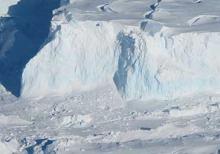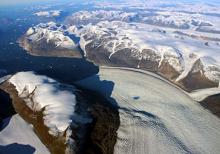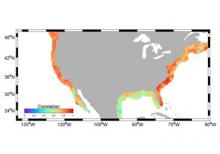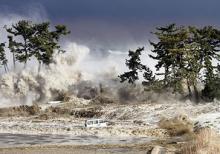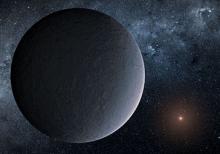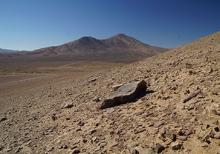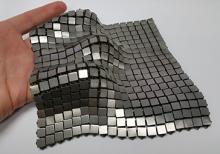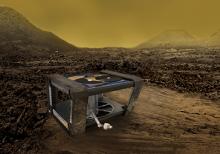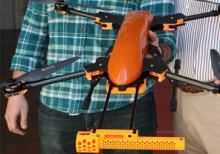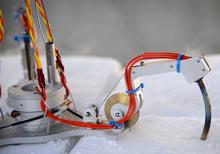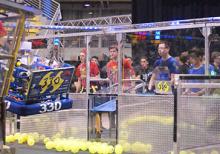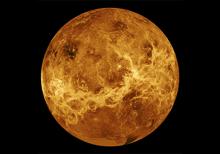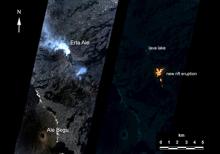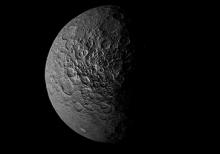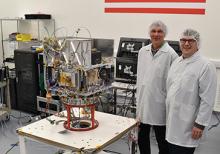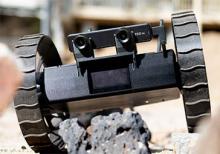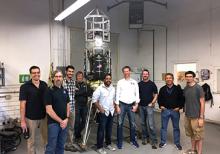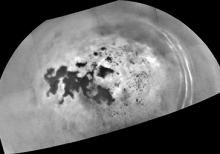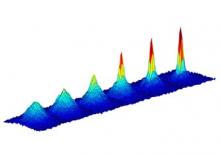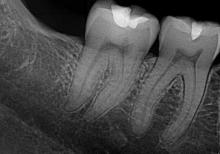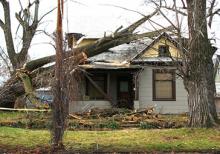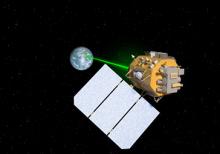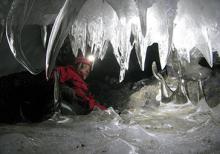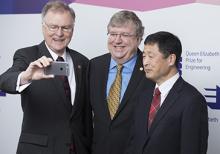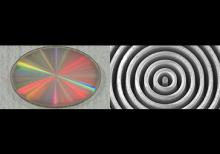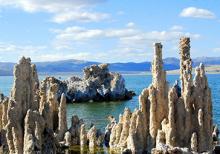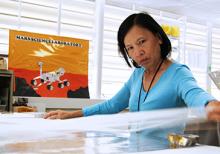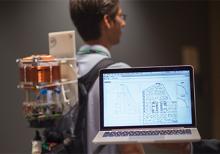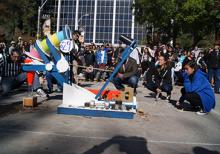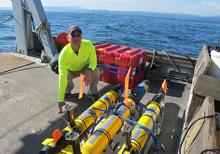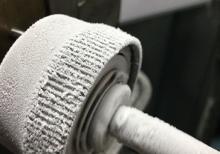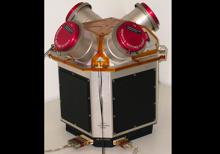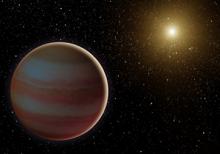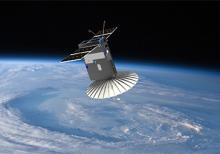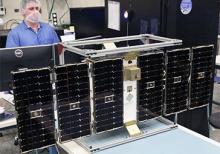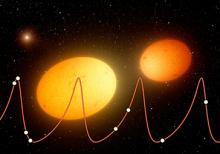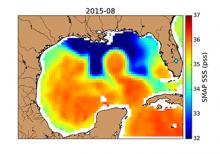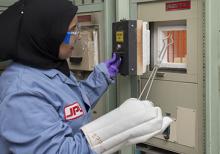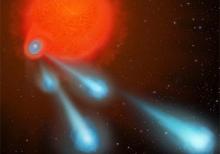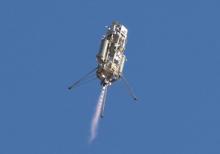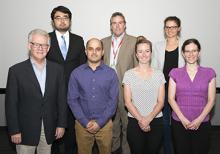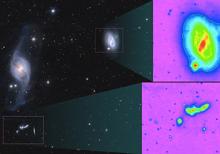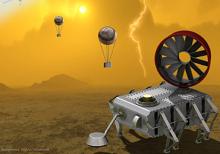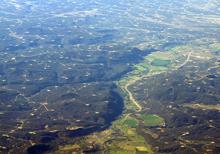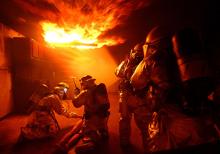The Media Relations Office at JPL is responsible for issuing press releases and hosting media events. As an institution, discussing new discoveries with the public is key to JPL's success as an institution. Below are selected press releases from JPL about new advances in many research fields.
News Board
Thwaites Glacier is melting rapidly but not as fast as earlier research predicted, according to a new NASA study using a more realistic computer model.
A NASA study finds during Greenland's two hottest summers on record, ice in Rink Glacier didn't just melt faster, it slid through the glacier's interior in a gigantic wave.
A new tool may help planners and decision makers identify key regions of the U.S. coastline that are vulnerable to regional sea level changes on 10- to 20-year timescales.
A new NASA study is challenging a long-held theory that tsunamis form and acquire their energy mostly from vertical movement of the seafloor.
Scientists have discovered a new planet with the mass of Earth, orbiting its star at the same distance that we orbit our sun.
JPL tests a portable chemistry lab designed for potential use on other planets.
3-D printing is inspiring new materials at JPL.
A new study explores potential climates of a planet orbiting two suns.
JPL provided five of the 22 concepts selected by NASA for further study.
A recently licensed sensor technology could allow drones to pinpoint methane leaks, enhancing public safety.
NASA's JPL has been prototyping new technologies for exploring ocean worlds.
Peter Theisinger, who led projects that developed multiple NASA rovers that successfully landed on Mars, will receive a National Air and Space Museum Lifetime Achievement Trophy.
Robots zipped through a steampunk-themed competition this past weekend in Long Beach, California.
JPL's concept to study Venus was included among the 10 studies selected.
For more than 12 years, A.I. developed at JPL has tracked wildfires, floods and erupting volcanoes.
The tilt of Ceres' rotation axis could be related to ice in shadowed regions, research from NASA's Dawn mission suggests.
JPL's Deep Space Atomic Clock was recently joined to the spacecraft that will take it into Earth orbit.
JPL's PUFFER is a scout robot that can flatten itself to crawl into tight spaces.
COBALT will help spacecraft avoid hazards and land closer to prime science targets.
A recent NASA-funded study has shown how the hydrocarbon lakes and seas of Saturn's moon Titan might occasionally erupt with dramatic patches of bubbles.
JPL's Cold Atom Laboratory will let scientists study bizarre physics in space.
Imaging technology developed at JPL is now used in dental X-rays.
While rain and snow in atmospheric river storms can be drought busters, they bring a well-known flood risk. A new NASA study shows they also bring high wind damage worldwide.
New laser technology could yield more science data and high-definition video from spacecraft.
A JPL robotics researcher tested new technologies in ice caves near an active volcano in Antarctica.
Eric Fossum receives the world's most prestigious engineering prize for leading a JPL team that developed breakthrough imaging technology in the 1990s.
A new device on the W.M. Keck Observatory in Hawaii has delivered its first images, showing a ring of planet-forming dust around a star.
On an otherworldly landscape in Mono Lake, California, scientists have tested a new method for potentially detecting chemical signatures of life on another planet.
Meet one of the seamstresses behind JPL's thermal blankets, which protect spacecraft from extreme environments.
Firefighters' lives are at risk if they get lost in smoky buildings. New JPL technology could help save them.
From GoPros to self-driving tractors, many industries are benefitting from JPL technology.
NASA's new Spinoff 2017 publication looks at 50 companies that use NASA tech innovations (including JPL technology) in products that will benefit all of us.
Now in its 19th year, the competition drew students from across Southern California -- and even as far away as Tanzania.
Underwater drone research could change how we study the ocean -- and could eventually look for life on other planets.
JPL research using metallic glass could change how robots move and reduce their cost.
The super-precise JPL thruster system has met all its mission goals on the LISA Pathfinder mission.
Two NASA space telescopes jointly observed a microlensing event, when a distant star brightens due to the gravitational field of at least one foreground cosmic object.
CubeSats are challenging JPL engineers to build next-gen antennas.
NASA is launching six next-generation, Earth-observing small satellite missions to demonstrate innovative approaches for studying our changing planet.
Heartbeat stars got their name because if you were to map out their brightness over time, the result looks like an electrocardiogram, a graph of the electrical activity of the heart.
A NASA analysis of a 2015 Texas flood is the first to document the full life cycle and impacts of a flood on both land and ocean.
JPL is involved in a study that tested quantum teleportation underneath the city of Calgary in Canada.
A cutting-edge development in spacecraft power systems is a powerful material with an unfamiliar name: skutterudite.
NASA's Hubble Space Telescope has detected superhot blobs of gas, each twice as massive as the planet Mars, being ejected near a dying star.
NASA tested new 'eyes' for its next Mars rover mission on a rocket built by Masten Space Systems in Mojave, California, thanks in part to NASA's Flight Opportunities Program.
Winners of the annual 2016 Postdoc Research Day gave seminars on their research and were presented with plaques to commemorate the event.
JPL and the National Cancer Institute renewed a partnership to extend development of data science that originated in space exploration and now supports cancer discoveries.
JPL explores five new ideas for space exploration, including robotic mirrors and an art-inspired automaton.
A NASA-led team has analyzed a "hot spot" of methane emissions in the U.S. Four Corners region, quantifying both its overall magnitude and the magnitudes of its sources.
JPL research designed to keep first responders out of harm's way receives award from the Department of Homeland Security.
Thwaites Glacier is melting rapidly but not as fast as earlier research predicted, according to a new NASA study using a more realistic computer model.
A NASA study finds during Greenland's two hottest summers on record, ice in Rink Glacier didn't just melt faster, it slid through the glacier's interior in a gigantic wave.
A new tool may help planners and decision makers identify key regions of the U.S. coastline that are vulnerable to regional sea level changes on 10- to 20-year timescales.
A new NASA study is challenging a long-held theory that tsunamis form and acquire their energy mostly from vertical movement of the seafloor.
Scientists have discovered a new planet with the mass of Earth, orbiting its star at the same distance that we orbit our sun.
JPL tests a portable chemistry lab designed for potential use on other planets.
3-D printing is inspiring new materials at JPL.
A new study explores potential climates of a planet orbiting two suns.
JPL provided five of the 22 concepts selected by NASA for further study.
A recently licensed sensor technology could allow drones to pinpoint methane leaks, enhancing public safety.
NASA's JPL has been prototyping new technologies for exploring ocean worlds.
Peter Theisinger, who led projects that developed multiple NASA rovers that successfully landed on Mars, will receive a National Air and Space Museum Lifetime Achievement Trophy.
Robots zipped through a steampunk-themed competition this past weekend in Long Beach, California.
JPL's concept to study Venus was included among the 10 studies selected.
For more than 12 years, A.I. developed at JPL has tracked wildfires, floods and erupting volcanoes.
The tilt of Ceres' rotation axis could be related to ice in shadowed regions, research from NASA's Dawn mission suggests.
JPL's Deep Space Atomic Clock was recently joined to the spacecraft that will take it into Earth orbit.
JPL's PUFFER is a scout robot that can flatten itself to crawl into tight spaces.
COBALT will help spacecraft avoid hazards and land closer to prime science targets.
A recent NASA-funded study has shown how the hydrocarbon lakes and seas of Saturn's moon Titan might occasionally erupt with dramatic patches of bubbles.
JPL's Cold Atom Laboratory will let scientists study bizarre physics in space.
Imaging technology developed at JPL is now used in dental X-rays.
While rain and snow in atmospheric river storms can be drought busters, they bring a well-known flood risk. A new NASA study shows they also bring high wind damage worldwide.
New laser technology could yield more science data and high-definition video from spacecraft.
A JPL robotics researcher tested new technologies in ice caves near an active volcano in Antarctica.
Eric Fossum receives the world's most prestigious engineering prize for leading a JPL team that developed breakthrough imaging technology in the 1990s.
A new device on the W.M. Keck Observatory in Hawaii has delivered its first images, showing a ring of planet-forming dust around a star.
On an otherworldly landscape in Mono Lake, California, scientists have tested a new method for potentially detecting chemical signatures of life on another planet.
Meet one of the seamstresses behind JPL's thermal blankets, which protect spacecraft from extreme environments.
Firefighters' lives are at risk if they get lost in smoky buildings. New JPL technology could help save them.
From GoPros to self-driving tractors, many industries are benefitting from JPL technology.
NASA's new Spinoff 2017 publication looks at 50 companies that use NASA tech innovations (including JPL technology) in products that will benefit all of us.
Now in its 19th year, the competition drew students from across Southern California -- and even as far away as Tanzania.
Underwater drone research could change how we study the ocean -- and could eventually look for life on other planets.
JPL research using metallic glass could change how robots move and reduce their cost.
The super-precise JPL thruster system has met all its mission goals on the LISA Pathfinder mission.
Two NASA space telescopes jointly observed a microlensing event, when a distant star brightens due to the gravitational field of at least one foreground cosmic object.
CubeSats are challenging JPL engineers to build next-gen antennas.
NASA is launching six next-generation, Earth-observing small satellite missions to demonstrate innovative approaches for studying our changing planet.
Heartbeat stars got their name because if you were to map out their brightness over time, the result looks like an electrocardiogram, a graph of the electrical activity of the heart.
A NASA analysis of a 2015 Texas flood is the first to document the full life cycle and impacts of a flood on both land and ocean.
JPL is involved in a study that tested quantum teleportation underneath the city of Calgary in Canada.
A cutting-edge development in spacecraft power systems is a powerful material with an unfamiliar name: skutterudite.
NASA's Hubble Space Telescope has detected superhot blobs of gas, each twice as massive as the planet Mars, being ejected near a dying star.
NASA tested new 'eyes' for its next Mars rover mission on a rocket built by Masten Space Systems in Mojave, California, thanks in part to NASA's Flight Opportunities Program.
Winners of the annual 2016 Postdoc Research Day gave seminars on their research and were presented with plaques to commemorate the event.
JPL and the National Cancer Institute renewed a partnership to extend development of data science that originated in space exploration and now supports cancer discoveries.
JPL explores five new ideas for space exploration, including robotic mirrors and an art-inspired automaton.
A NASA-led team has analyzed a "hot spot" of methane emissions in the U.S. Four Corners region, quantifying both its overall magnitude and the magnitudes of its sources.
JPL research designed to keep first responders out of harm's way receives award from the Department of Homeland Security.
